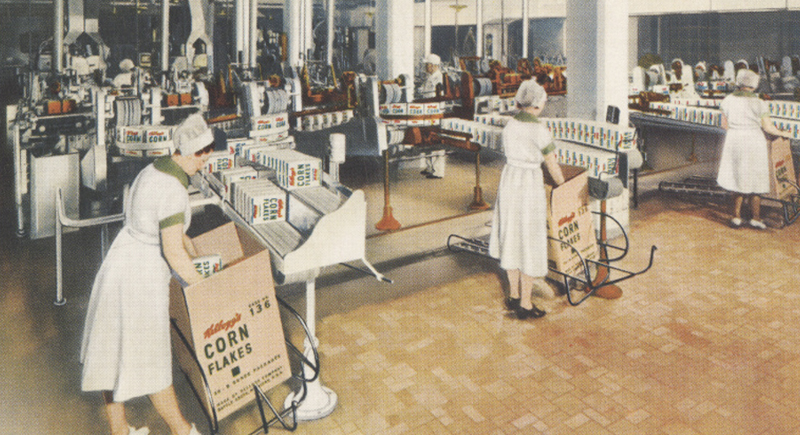The Bizarre History of Kellogg’s Corn Flakes and Their Invention
Kellogg’s Corn Flakes might seem like the simplest breakfast choice, yet their origin story is anything but ordinary. The cereal came from a doctor whose ideas about health shaped an entire food movement, and from an accidental kitchen experiment that turned into a business. Along the way, the brothers behind the recipe disagreed over everything from ingredients to ownership, and their conflict helped define one of America’s most famous brands.
The Sanitarium That Started A Breakfast Shift

Image via Wikimedia Commons/PPOC, Library of Congress
Dr. John Harvey Kellogg ran a health institute in Battle Creek, Michigan, in the late 1800s, and he treated digestion like the cornerstone of a stable mind and body. His medical worldview was shaped by the Seventh-day Adventist Church, which influenced everything within the sanitarium, including the strict dietary guidelines.
Patients ate simple foods designed to calm the body. While that sounds innocent enough, his definition of “healthy habits” stretched far past fiber intake. He believed bland meals discouraged carnal acts, which he viewed as harmful behavior, and he wrote extensively about extreme interventions.
Inside this strict and unusual environment, experimentation in the kitchen became routine. Jars of grains, flours, and mixtures filled the sanitarium as staff tried to create foods that met the doctor’s standards. One batch of cereal dough sat out for a while, and instead of tossing it, the team rolled it out and baked it. This created thin, crisp flakes that stirred an idea.
Breakfast Turned Into A Family Feud
Dr. Kellogg’s brother, Will, worked in the sanitarium kitchen and saw potential in the accidental wheat flakes. He tested different grains and learned that corn created a crispier result than wheat. Will also believed that a touch of sugar made the cereal more appealing, though this move clashed with the doctor’s strict rules. Their disagreement grew, and the tension pushed them into a deep split. Will eventually bought the rights, incorporated the recipe into his new company, and began selling the cereal that would later become a grocery staple.
Their rivalry played out alongside another competitor in Battle Creek. CW Post, once a patient at the sanitarium, used what he learned there to launch his own cereal line. He introduced Grape-Nuts in the 1890s and eventually built a food company that challenged Kellogg’s.
How One Myth Took Over The Internet

Image via Wikimedia Commons/Miami U. Libraries
Modern readers often hear that Corn Flakes were invented to stop people from having intimate, carnal thoughts. The truth is less direct, though still connected to the doctor’s beliefs. Snopes has clarified that Kellogg never stated Corn Flakes were explicitly designed for that purpose, even if he linked plain diets to moral behavior. His goal leaned more toward creating foods that supported digestion and fit his strict lifestyle teachings.
Over time, sugary versions of the cereal were introduced to shelves under Will’s leadership. The sweeter spin drifted far away from the doctor’s original intentions but helped increase the cereal’s popularity.